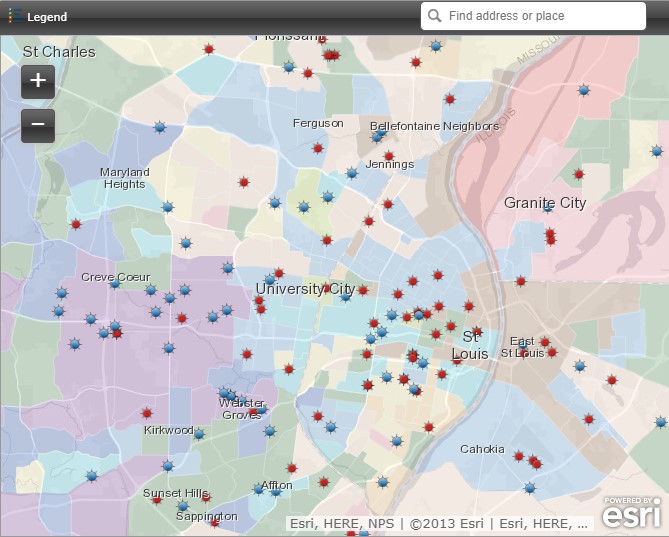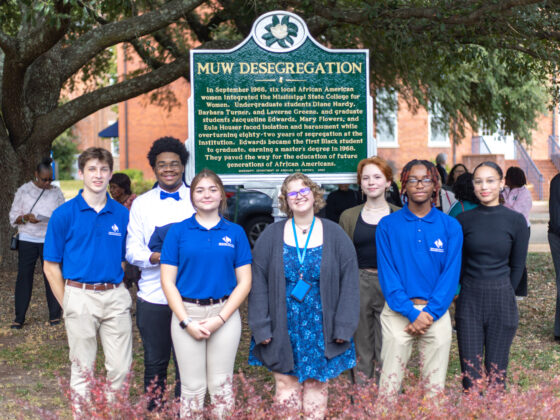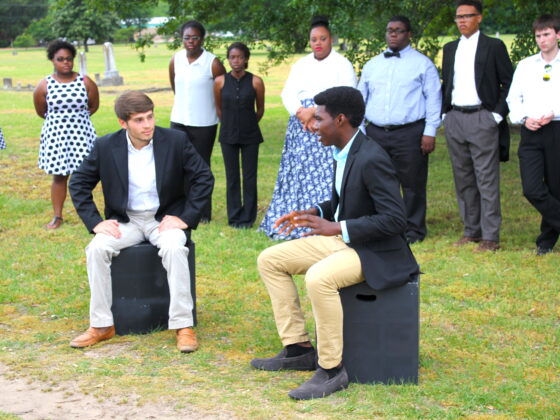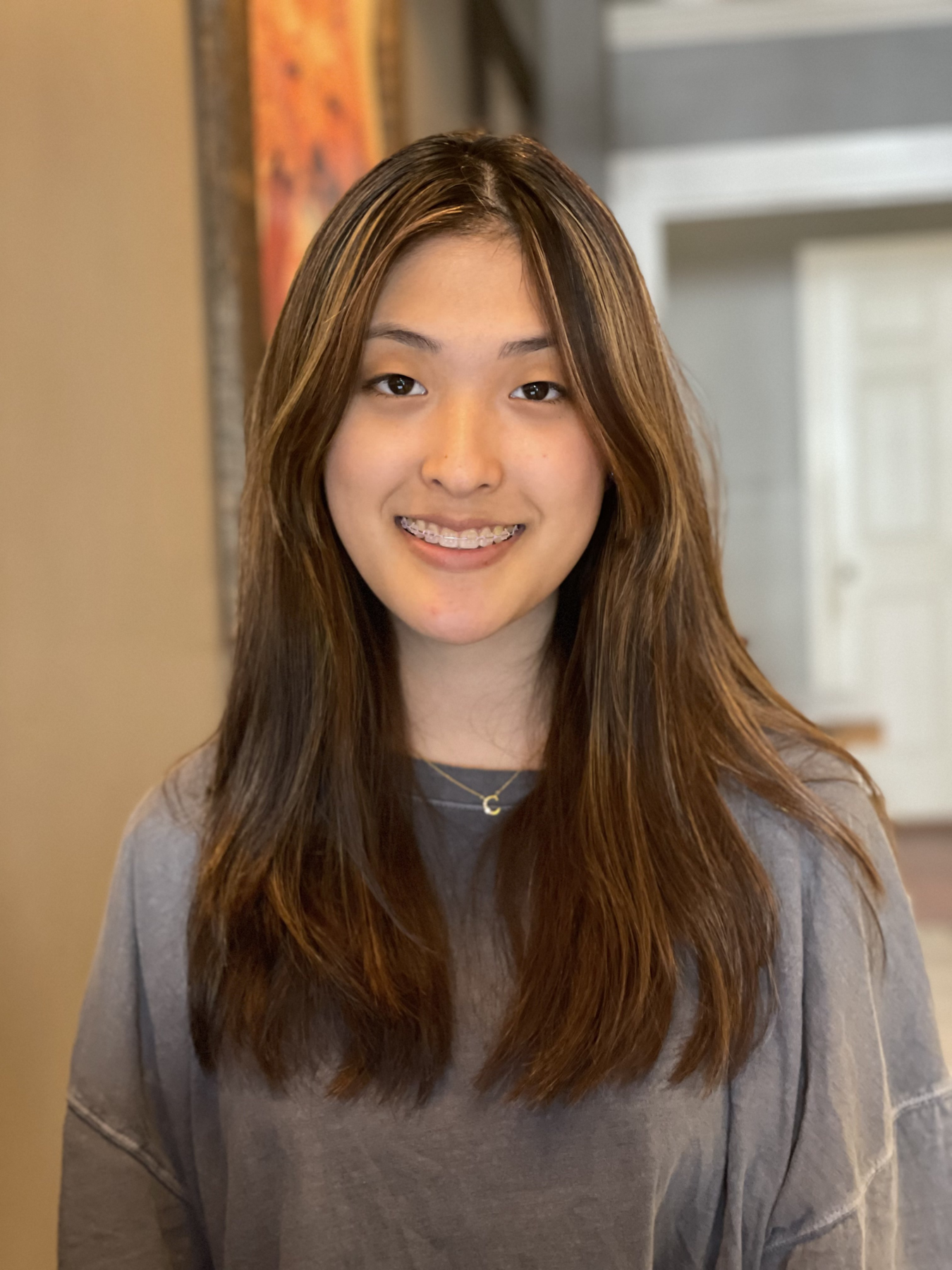“Hello. Where did you go to high school?” When so many of you nominated this question as your natural conversation starter, as I mentioned here last week, it was tempting to dismiss it as an example of how Americans never quite get over high school. Was this just about Fast Times at Ridgemont High, or 90210, or The O.C., or forever remembering all the other schools in your league? Or maybe you all are 18 years old. But you wrote with such enthusiasm, thoroughness, and conviction, that it looked like something else was going on. So, I decided to look again.
Your nominations of this particular question came in from all corners of the country—all mid-sized cities—like Louisville, New Orleans, St. Louis, Cincinnati, Baltimore, Charlotte. They came from all ages of you, from the millennials to those who wrote that a half century ago, this question was also asked in Chicago and San Francisco, when those cities were arguably more “mid-size” than they are today. You also said this was the question of Oahu (where we know the young Barack Obama of modest means attended the elite private school, Punahou) and from Melbourne, Australia.
From your descriptions, it became clear that “Where did you go to high school?” is another way of asking “Where do you live?” But you aren’t seeking a simple answer of name or geography with either of those questions. You are using those questions to seek valuable information about the socio-economic-cultural-historical background of a person. It helps you orient that person in the context of the world as you live it and interpret it.
Here are a few of your comments:
From Charlotte: When I’m in Charlotte, I’ll ask where they went to high school. It’s a pretty good indicator of socioeconomic status but more importantly, transplant status. If you went to a certain high school, it was almost a guarantee that your family moved here relatively recently. This is due to how the city expanded and the new high schools that were built to meet that growth. People in Charlotte are snobs about high schools, especially the transplant schools. I went to the “old money natives” high school, Myers Park, and we looked down on the students at “new money transplants” Providence, and don’t even get us started on Ardrey Kell, which is just “transplants.”
From San Francisco of yesteryear: “Where’d you go to school?” was parochial in both senses of the word and often a handy indicator not only of neighborhood, but also for ethnicity, religious affiliation and social class. In the San Francisco of the 1950s and 1960s where my mom grew up, which was more ethnically Irish and Italian than it is today, I would guess this question was probably relevant, but the City has undergone so much demographic and linguistic evolution through immigration and out-of-state transplants since then (and I don’t live there now myself), I don’t know if people still commonly ask it.
From Cincinnati, a charming cultural moment, confirming that this has always been the question: I thought I would share a moment from my first 6 months in NYC. My parents came up for a February visit and let 21-year-old me pick a jacket-and-tie spot for a nightcap; the Rainbow Bar was the swankiest joint I could imagine, so there we went. While waiting to get in, I had the great good fortune to (literally) bump into Kentucky-born but Cincinnati-bred Rosemary Clooney, fresh off her 9 o’clock set in the Rainbow Room. After apologizing profusely, I had the presence of mind to say “I’m from Cincinnati, too!” Rosemary Clooney took me by the elbow, leaned in, smiled and asked “Where did you go to school?”
Since several people from St. Louis reported that this was and is The Question to ask, we thought we would try to look at, and display, the responses another way. Our partner in this project, the GIS mapping company Esri, creates the software that governments, companies, NGOs, and individuals use to display and analyze wide varieties of data by applying it to maps. We wanted to visualize and amplify the stories you are telling us. So, John Tierney, our American Futures partner, put together this ArcGIS map about the St. Louis area in general but with ramifications more generally.
Here is how it works:
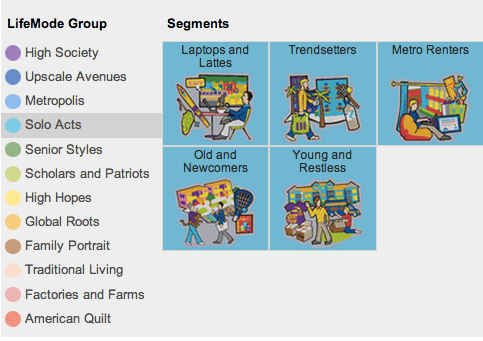
You can see a poster of the entire “tapestry segmentation” chart here. In Esri’s own words:
Tapestry Segmentation combines the “who” of lifestyle demography with the “where” of local neighborhood geography to create a model of various lifestyle classifications, or segments, of actual neighborhoods with addresses…
Now, to put the map to use:
Step 1: If you click on a particular school in the St. Louis area, you’ll see a description of that school pop up. For instance, here is one in Ladue.
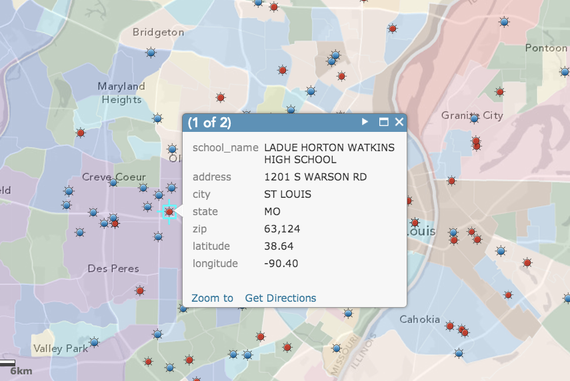
Step 2: If you click the arrow to see the second page of the description, you’ll see information about the tapestry segment of the area where the school is located. Sometimes, there are more pages for more segments, in this case two. The first is “Top Rung”:
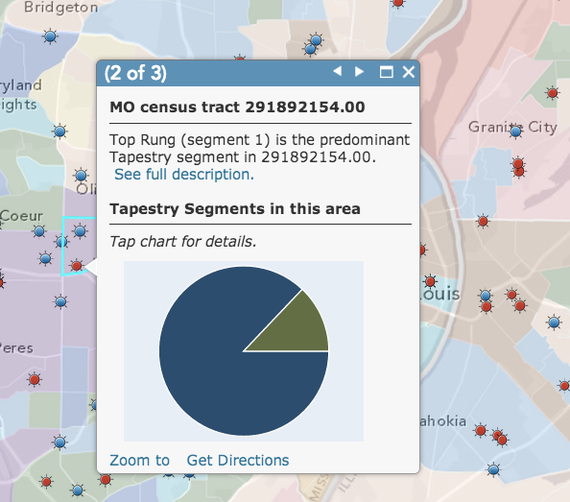
And the other is “Connoisseurs”:
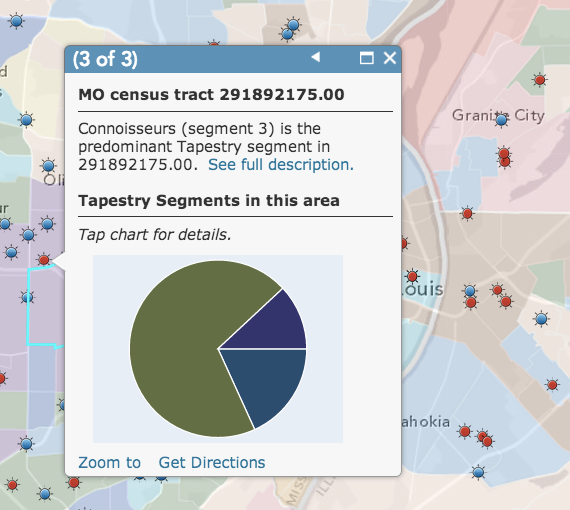
Step 3: You can click on a description of the segments to see their finer-grained makeup and sociology. Eg for Connoisseurs: “Exercise is a priority; they work out weekly at a club or other facility, ski, play golf and tennis, practice yoga, and jog.”
Step 4: This is a bonus. The first map is fully interactive. It has school data only for St. Louis and environs, but it includes Tapestry analysis of the country as a whole. So you can scroll, zoom, pan, or search to get to your own neighborhood and see what the data experts think about you and where you live! If you don’t see the Tapestry layers when you’re looking at a specific address, click the minus button (-) a time or two until the layers appear.
And all of this behind the simple question, “Where did you go to high school?”


